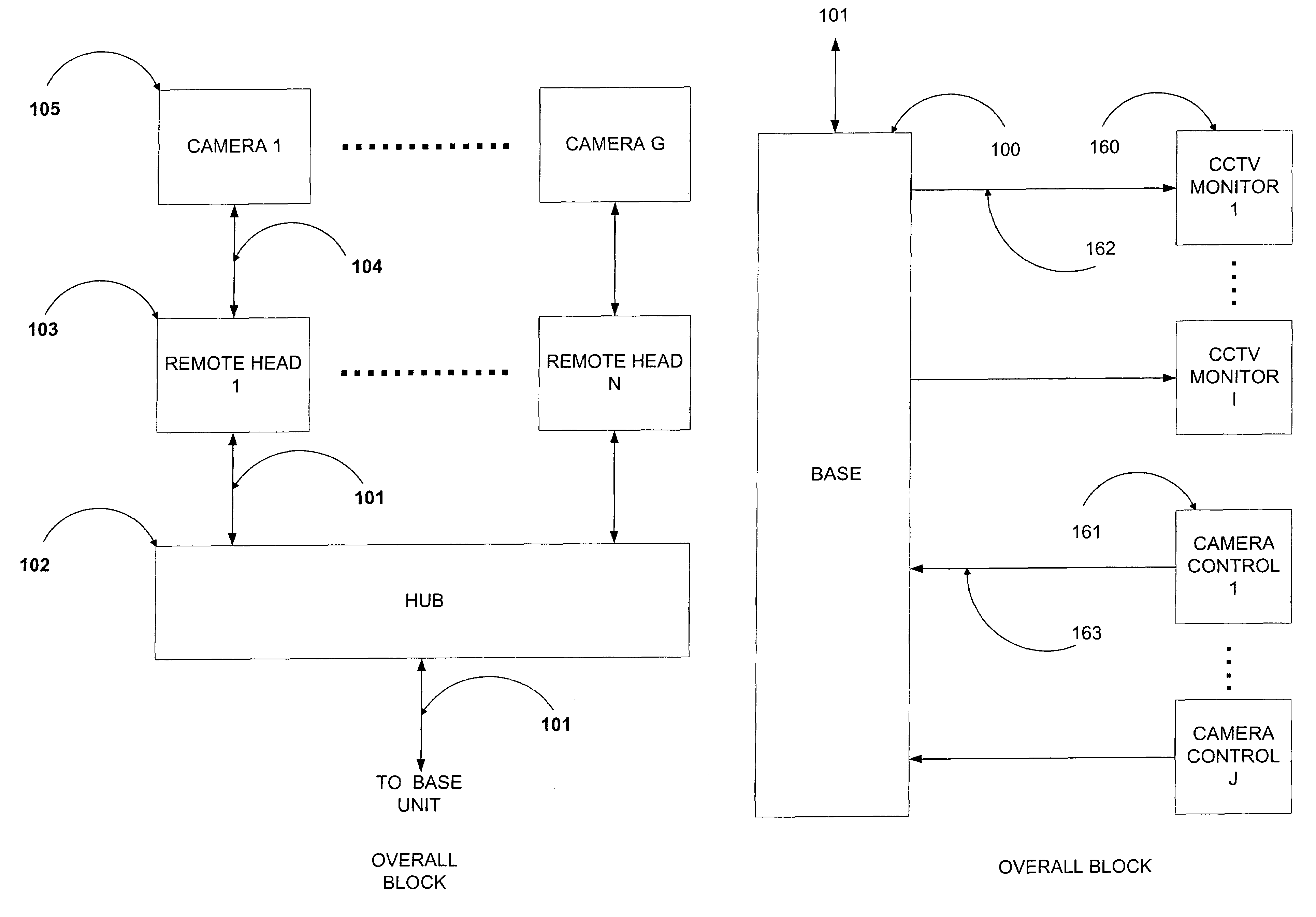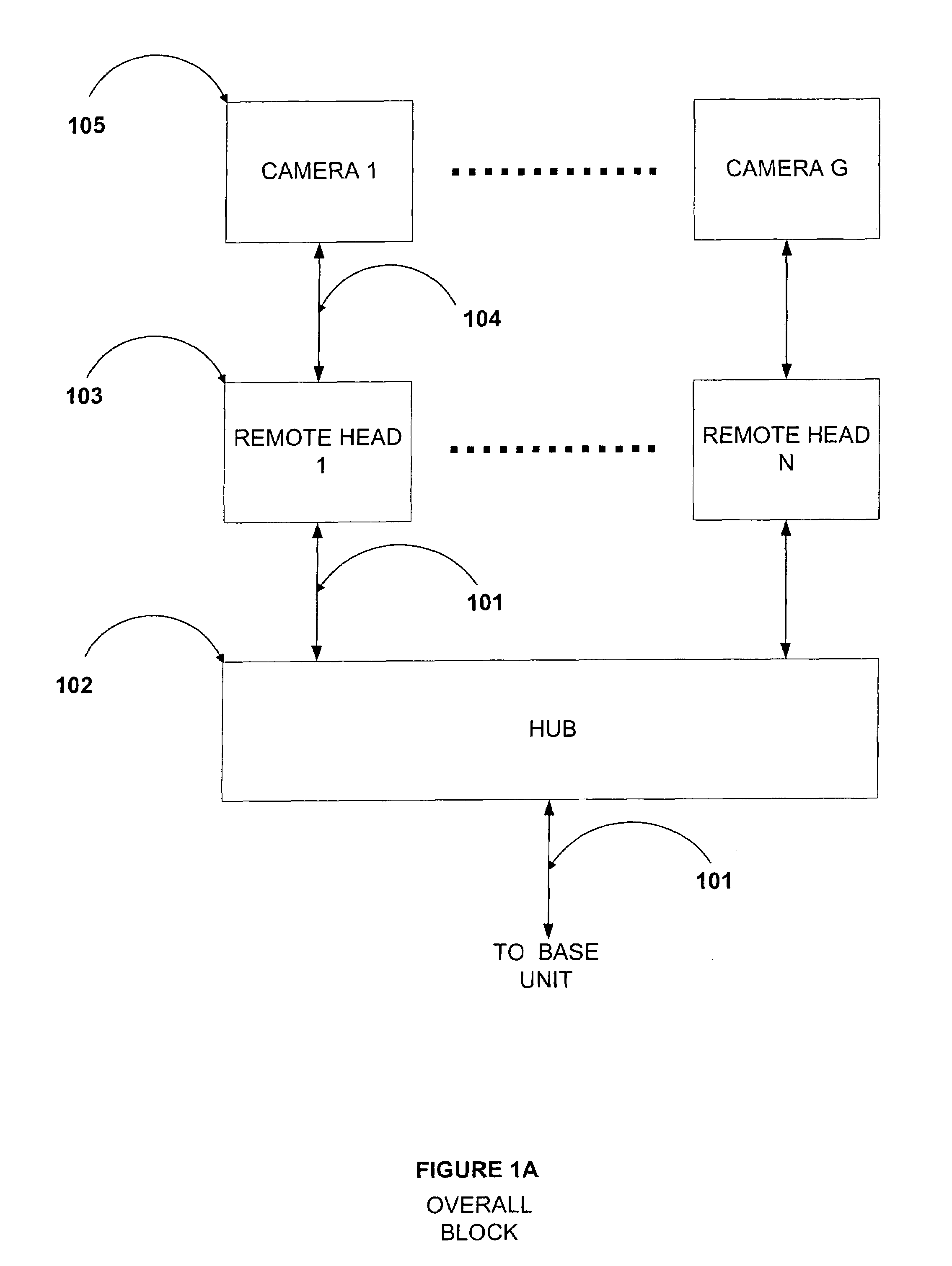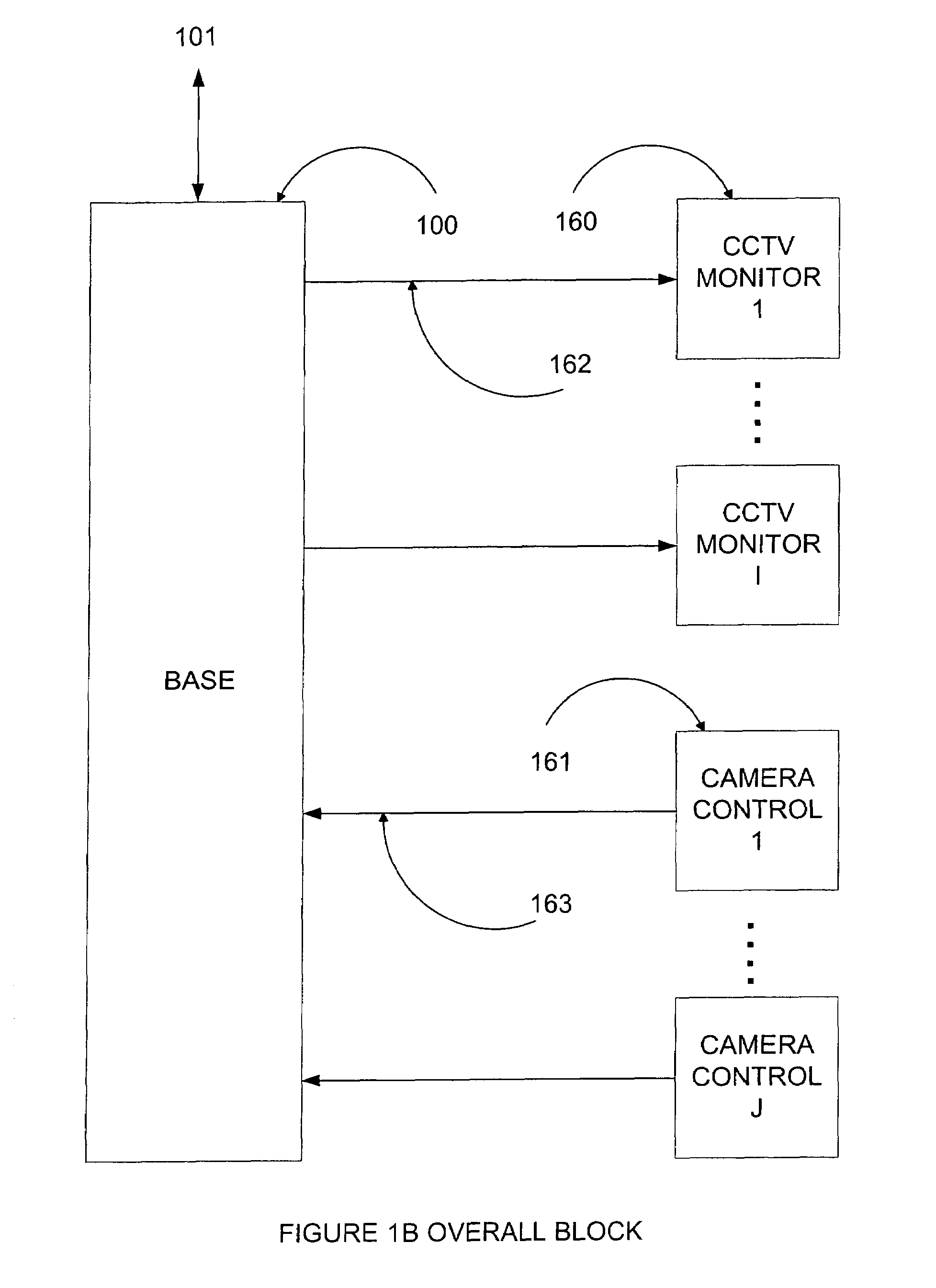[0012]More specifically, the illustrative embodiment provides a high-speed serial digital communication and
control system, and corresponding methods of operation, suitable for use in surveillance, broadcast or other applications. This embodiment allows real-
time control of cameras or other input / output devices. The digital transmission of video, audio and data has more
noise immunity and less
distortion than conventional analog systems. Since this embodiment does not compress the digitized video, there are no
motion artifacts or loss of
image quality. The illustrative embodiment uses fiber optic cables which allow for an increase in the distance between remote units and the hub or base units, allows for easy mixing of different camera types, and provides the option of system expansion by adding additional remote interfaces and corresponding video sources. The present invention allows the simultaneous transport of a plurality of remote video sources.
[0014]Each remote interface unit accepts and converts analog video and audio signals into digital downlink data for transmission over its own fiber optic cable to the central hub unit. This remote interface also accepts
digital data signals, if present, from its remote source, or an
end user there, and combines these with the digital downlink
stream that includes the above video. These data signals could also include status information, such as video present or uplink fail. Each remote head also receives, over the same fiber optic cable, digital uplink data and control signals from the hub which originated from the base, selects the data and / or control signals that are assigned to it, and outputs these to control the remote source and / or convey data to an
end user there. Each remote head also has a programmable cable
equalizer circuit, to compensate for long
coaxial cable runs from the analog video source to the remote head. In this way,
high frequency roll-off due to cable losses can be compensated for. The
equalizer can be bypassed for short cable distances.
[0017]In addition to the combined data and control signals that are destined for the individual remote heads, the uplink
stream from the base also has embedded within it, a
master clock signal derived from a
master clock source in the base. This is used to reconstruct a replica of the
master clock in the hub and each remote head, so that all clocks throughout the system are frequency locked, and any videos that are digitized at the heads can be combined digitally at the hub and streamed to the base without the above-noted problems associated with
clock frequency differences. There will still be a
phase difference between the recovered
clock in the hub and the clock associated with the data from any one remote head, due to path lengths from the head to the hub, but this can be accommodated by a very small, inexpensive
FIFO memory which cannot underflow or overflow, in the manner described previously, because the input and output clock frequencies are now the same. Thus, the video can be kept in digital format and transported and recovered with little or no overhead because the system is completely synchronous.
[0018]The uplink
stream also has embedded within it, reference signals that enable each remote head, and the hub, to locate within the stream the uplink data and control signals destined for it. In this way each head can be accessed individually and simultaneously. Each head can be programmed to capture data and / or control from any one of the interfaces at the base. The streams uplinked from the base to the hub, and from the hub to the heads are all identical (i.e., they are the same
signal). This has the
advantage of allowing an individual head to be moved from port to port on the hub without having to reprogram that head, unlike other systems, which may assign a remote head to one hub port only.
[0021]The system can
handle control protocols for a multiplicity of camera types, because it is transparent to them. Unlike other systems, the system in the illustrative embodiment does not require a
microcontroller or any other form of
software,
firmware or intelligence to manage user data or prior knowledge of the protocol of that data in order to packetize it or to add signal management content to it, such as address bits,
data type bits, start and stop bits, so that it can be routed to, and extracted by, a specific location. The time-division
multiplexing of the raw user data and the broadcast nature of the uplink and downlink multiplexed data combined with a reference signal for time-division demultiplexing and extraction of data by the intended destination, ensures a simple, low cost, transparent means of data communication. It will be apparent to anyone skilled in the art that, except for the bit-error rate testing and
system health monitoring functions, the illustrative embodiment may be implemented as a completely “hardware-based” system, although numerous other implementations are possible using various combinations of hardware,
software or
firmware.
 Login to View More
Login to View More  Login to View More
Login to View More 


